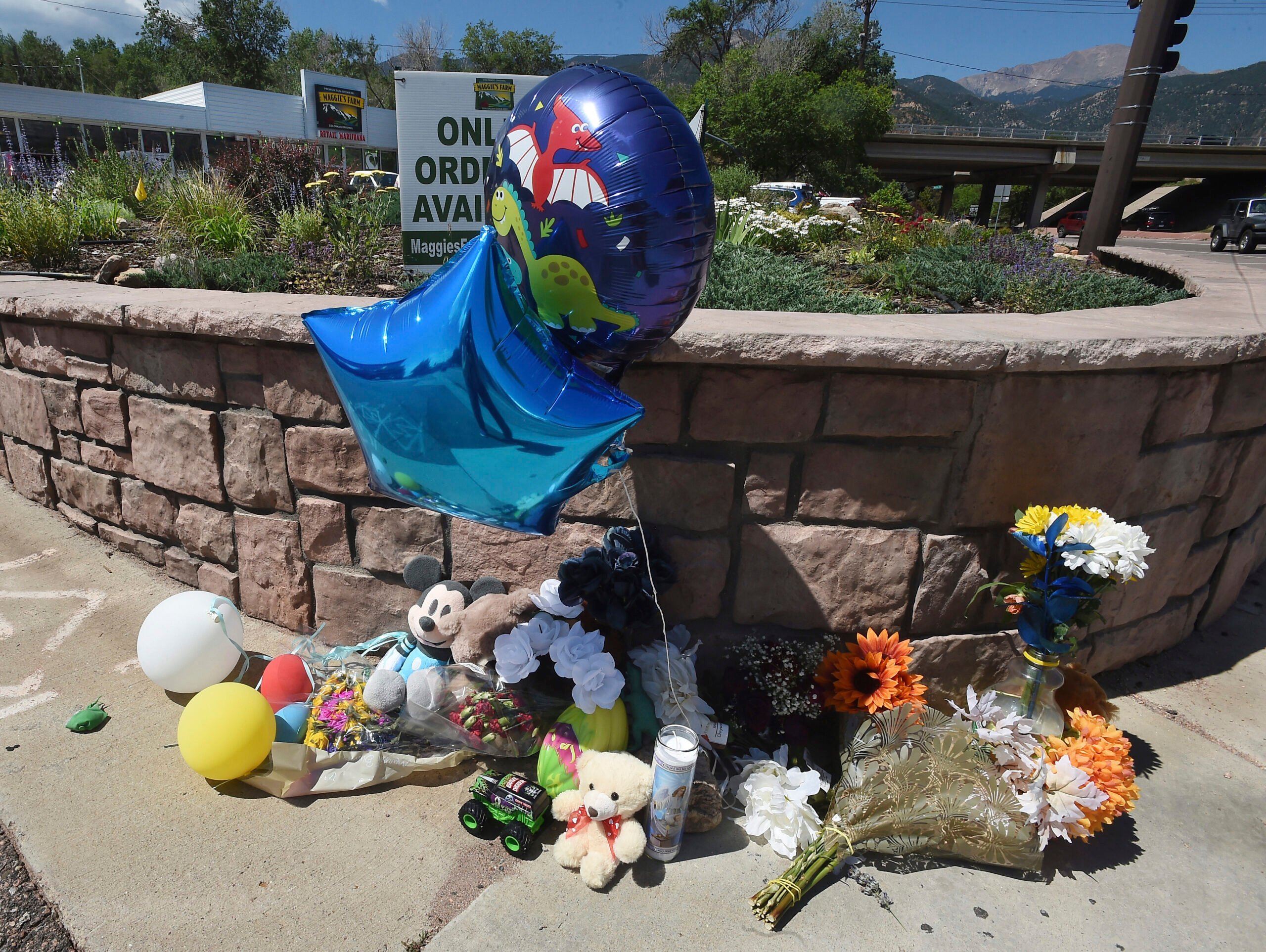On May 16, in Houston, a 4-year-old boy found a gun that belonged to a visiting relative and shot his 1-year-old brother in the leg, wounding him. Their father told a local news outlet that his older son liked to play with toy guns and probably didn’t realize this one was real.
A reader, moved by tragedies like these, wrote in and asked us how often a child unintentionally shoots another child with an unsecured gun.
Here’s what the data says:
A shooting almost every other day
To answer the reader’s question, we pulled data from the Gun Violence Archive, a nonprofit that tracks shootings in near-real-time through news clips and police reports. We decided to look only at incidents in which both the shooter and the victim were under 13 years of age.
Our analysis found that between May 1, 2022, and April 30, 2023, there were at least 162 incidents in which a child under 13 picked up a gun and fired it, inadvertently wounding or killing themselves or another child under 13. A total of 71 children were killed and 96 were injured.
More than two-thirds of the shootings were self-inflicted. Such was the case in Indianapolis on April 16, when 6-year-old Billy Mack fatally shot himself with a gun that his parents thought was out of his reach. His family reportedly kept the gun for protection. “A family’s life has been changed forever, and unfortunately, it is because of a weapon, because of a gun,” a police spokesperson said.
Several of the incidents involved siblings shooting each other. In July 2022, in Muncie, Indiana, a 6-year-old boy killed his 5-year-old sister with a gun he found in his parents’ safe. The boy told police he found the key and opened the safe when his mother was taking a nap, and that his father had recently taken him shooting at a local range. On January 23, in Shreveport, Louisiana, a 5-year-old boy shot his 9-year-old sister with an unsecured handgun he found in their home, wounding her in the arm and stomach. On March 12, in Harris County, Texas, a 3-year-old girl unintentionally killed her 4-year-old sister with a handgun she found in a bedroom.
Among the 138 cases in which the exact ages of the children were known, the median age of the kids who pulled the trigger was 4 years old.
The youngest victim was a 5-month-old girl wounded by her 3-year-old brother in Tampa last September. The boy found a handgun at his mother’s home and shot his baby sister in the hip.
States with weak gun laws had the most incidents
In our sample of incidents, the states with the highest number over the past year were Texas, with 14; Louisiana, with 12; Missouri, with 11; Indiana, with 10; and Florida, Georgia, Ohio, and Tennessee, with nine each. All of these states have generally permissive gun laws, and little or no regulation governing how guns are stored in the home or around children, according to Giffords Law Center, the legal arm of the gun reform group.
“These are states that have a really different culture around guns, which also influences gun ownership rates,” said Allison Anderman, senior counsel and director of local policy at Giffords Law Center. “And I think a culture where an individual’s identity is much more associated with gun ownership also contributes to guns being left accessible.”
The unprecedented rollback of state gun laws in the past decade and a half has contributed to a laissez-faire attitude around gun storage and handling, said Eric Fleegler, an emergency physician at Boston Children’s Hospital and an associate professor of Pediatrics and Emergency Medicine at Harvard Medical School. “Stand your ground” and permitless carry laws in particular, Fleegler said, have “encouraged a cavalier attitude towards a highly lethal thing — a gun. And people truly, fundamentally, do not understand this.”
“Do laws make a difference?” Fleegler added. “The answer is yes, but the laws unto themselves are not the only thing that we have to think about.”
Motivations for gun ownership have also changed over the past 50 years, and that’s influenced the type of guns people own, and how those guns are stored. Gun production data and gun owner surveys show a shift away from hunting and sporting firearms toward concealable handguns for self-defense. In 1970, rifles and shotguns routinely outsold pistols and revolvers, accounting for 64 percent of domestic firearm production. Today handguns account for 58 percent of domestic firearm manufacturing.
“If people are owning guns in areas primarily because they are hunters, and they like to use them for sports-related stuff, as opposed to places where people own guns because they believe they need them for protection in their home, it’s likely that guns are going to be stored differently,” Fleegler said.
Guns intended for defensive use are more likely to be kept readily accessible and loaded — which poses the greatest risk to kids. An estimated 4.6 million kids live in a home with at least one unlocked, loaded gun, a 2021 survey of American adults from Harvard and Northeastern University found. According to a 2022 survey of gun owners from Rutgers University, 58 percent of respondents said they keep at least one firearm hidden, but unlocked. Of that number, 45 percent said they did so because locks would prevent quick access to their gun in an emergency.
The American Academy of Pediatrics recommends that guns in households with children should be unloaded and in locked storage, with ammunition stored separately.
What policies can help reduce shootings involving kids?
Gun reform advocates and some researchers say the most effective way to reduce unintentional shootings involving children are safe storage laws, which require guns to be stored locked up and out of reach, and child access prevention (CAP) laws, which impose penalties on adults who fail to store guns securely around children.
According to Giffords Law Center, which tracks gun policies across the country, only two states require unattended guns to be locked up at all times: Massachusetts and Oregon. Violators in Oregon are subject to fines, while violators in Massachusetts are subject to both fines and imprisonment. Neither state appears in our dataset. Five additional states require guns to be safely stored around people ineligible to possess guns, including children: California, Colorado, Connecticut, Delaware, and New York.
States With Child Access Prevention or Safe Storage Laws
CAP laws impose penalties on adults who fail to secure a firearm around an unsupervised minor. In contrast, safe storage laws require unattended firearms to be stored in a certain way.
Eighteen other states and Washington, D.C., have CAP laws, which impose civil or criminal penalties if a child is able or likely to gain access to a firearm; gains access to a firearm; or uses a firearm to injure or kill someone. The strength of such laws vary by state.
Of the nine states with the most incidents in our dataset, only Texas and Florida have CAP laws. Texas imposes a fine when a child 16 or younger accesses a loaded gun, and fines and/or jail time if a child shoots someone. Florida charges gun owners with a misdemeanor if they knowingly leave a gun where a child aged 15 or younger is likely to find it and the child then displays it in public or wields it in a threatening manner. Violators are subject to a $500 fine or up to 60 days in jail. (Michigan, which had the sixth-highest number of incidents in our dataset, just passed a law requiring gun owners to keep unattended guns unloaded and locked up around children; it takes effect next year.)
There are two types of CAP laws, and one is more effective at preventing unintentional shooting deaths of young children, said Fleegler, who co-authored a 2020 study on the policies. He and his co-authors found that so-called recklessness laws, which hold gun owners liable only if they directly provide a gun to a child and the child then uses that gun to harm someone, don’t significantly reduce gun deaths in children. The parameters are too narrow to apply to a broad subset of gun owners, blunting the policy’s effect, the researchers’s findings suggest. Texas and Florida’s CAP laws fall into this category.
So-called negligence laws, which hold a homeowner liable when a gun is stored in a way that a child could gain access to it or use it, were associated with a 13 percent reduction in unintentional firearm fatalities among kids under 15, according to Fleegler’s study. Because negligence laws don’t rely on an adult handing a child a gun, or the child using a gun, they would apply to a larger number of cases. The strictest negligence law, which imposes liability if a child could potentially access a firearm but doesn’t necessarily do so, was associated with a 59 percent reduction in unintentional firearm deaths over a 15-year-period, the researchers found.
Laws that require guns to be securely stored are popular with the public — and gun owners. A 2019 American Public Media poll found that 79 percent of Americans and 66 percent of gun owners supported a requirement to store unattended guns with a lock in place.
The RAND Corporation, a public policy institute that rates CAP laws as among the most effective gun violence reduction policies, recommends that states consider making child access to firearms a felony. But even in states with strong CAP laws, enforcement depends on individual prosecutors, says Anderman, the policy expert at Giffords. And sometimes when a child dies after accessing a parent’s gun, the view among law enforcement is that the family has suffered enough.
Another obstacle to CAP law enforcement, Anderman said, is that in states with a strong gun culture, leaving a gun lying around isn’t seen as a crime or even taboo, but necessary for self-defense.
“The consequence of all of these things — permitless carry, stand your ground, and the notion that you need to be afraid and armed at all times — is that more people are getting shot,” Anderman said.

